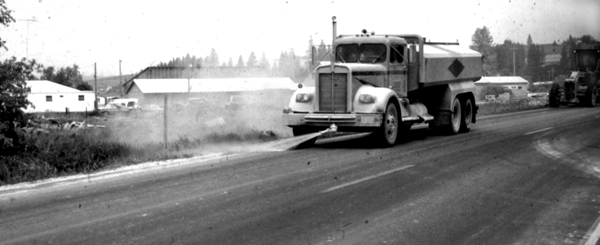Thirty-eight years ago (May 18, 1980), Mount St. Helens erupted, spewing smoke and ash that traveled more than 300 miles before landing in the Lewiston area.
Rex Williams, who was stationed in Potlatch at the time, joined his fellow maintenance workers in an effort to clear the 1.5 inches of ash that fell on US-95, though they were not sure how to clear the roadway.
“The first day, we tried using a rubber blade to avoid creating sparks while plowing, but that didn’t work,” Williams said. “The ash got into the engine and caused it to fail within five miles. We were also kicking up a lot of dust.”
For the same reason, brooming was not an effective solution at first as it simply created a plume of grey that reduced visibility for drivers.
“Then we figured out that if we sprayed the ash with water and broomed it to the fog line, we could use spray it again and use a grader to blade it off the roadway,” Williams said. “We rented every water truck we could find from all over the Pacific Northwest.”
In the following days, workers donned masks to protect them from the abrasive ash, changed air filters in the trucks to prevent engine failure and picked up many motorists stranded along the highway after ash clogged their engines.
It would take weeks to clear ash from the highways in the Moscow-Pullman area, which Williams recalls as the region that saw the most ash in the state.
“We didn’t have handheld radios at the time, which meant our work zones had to be short so that everyone was in view of the flaggers,” Williams said. “You were lucky if you made it five miles a day.”
Historic photos around the time of the eruption will be added to ITD’s photo collection shortly. In the meantime, share your historic photos with #MountStHelens and #ITD.

